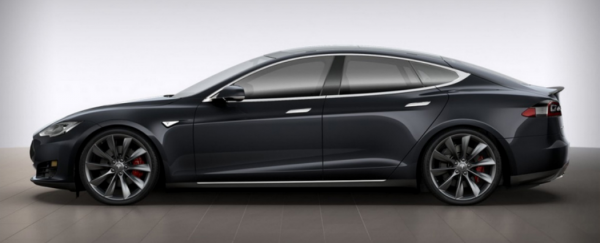Late last year, Elon Musk's Tesla Motors announced that its new Tesla P85D electric car can go from 0 to 96 km/h (60 miles per hour) in 3.2 seconds flat, making it the fastest accelerating sedan in history. This zero emissions machine even beats out the gas-guzzling Dodge SRT Charger - tipped to be the fastest sedan in the world - which can do the same in 3.7 seconds.
" Elon Musk said the [P85D] target for acceleration was the world's greatest supercars. What the company ended up with was 3.2 seconds from 0 to 60, something that really doesn't look like much on paper, but feels like being in a rocket ship when you're actually inside a vehicle, and ultimately behind the wheel," says Josh Lowensohn at the Verge, when he was given a test-run late last year.
Not that ridiculous levels of acceleration are always appropriate, as the video below by Brooks Weisblat aka DragTimes on YouTube clearly shows that people young and old alike are not necessarily prepared for that much power. Neither is that little girl's iPhone. So the capacity for super-acceleration has been locked behind the car's 'insane mode' button on the dashboard.

It's obviously just a bit of dumb fun, but it's great to see where the future of electric cars is likely heading, as their petrol-dependant peers begin to look more and more unnecessary. But would a world driven by anything other than gasoline actually be better? It's a more complicated question than you might think, because it depends a whole lot on how you're getting that electricity. So late last year, a team led by Christopher Tessum, an environmental engineer at the University of Minnesota in the US, investigated the health effects of 10 alternatives to conventional gasoline vehicles.
Those 10 alternatives were grid-independent hybrid electric vehicles, diesel powered light-duty vehicles, internal-combustion compressed natural gas vehicles, vehicles powered by ethanol from corn grain through natural-gas–powered dry milling, vehicles powered by cellulosic ethanol from corn stover, plus battery electric vehicles powered by electricity from the following: the projected year 2020 US average electric generation mix; coal; natural gas; the combustion of corn stover; and wind turbines, dynamic water power, or solar power.
Publishing in the Proceedings of the National Academy of Sciences, the team found that electric vehicles powered by electricity from natural gas or wind, water, or solar power were best for improving air quality - and hence, human health - while vehicles powered by corn ethanol and electric vehicles powered by coal were the worst. In fact, they say that powering your car with corn ethanol or with coal-based electricity increases the negative health impacts by at least 80 percent, as compared to conventional gasoline vehicles, while electric vehicles powered by low-emitting, renewable energy sources reduce environmental health impacts by at least 50 percent.
"We were surprised that many alternative vehicle fuels and technologies that are put forward as better for the environment than conventional gasoline vehicles did not end up causing large decreases in air quality-related health impacts," Tessum told Charles Q. Choi at Popular Science. "The most important implication is that electric vehicles can cause large public health improvements, but only when paired with clean electricity. Adapting electric vehicles without taking steps to clean up electric generation would be worse for public health than continuing to use conventional gasoline vehicles."
So where does that leave the Tesla P85D and its 'insane mode' button? As Alex Epstein points out at Forbes, the electricity has to come from somewhere, and fossil fuels - coal, oil, and natural gas - produce 67 percent of the world's electricity. Elon Musk has said his cars are designed to run on energy from renewable sources, but we're not there yet.
So that's kind of a bummer, but do you know what's awesome? Watching the P85D drive by itself, which you can watch below. Will we ever have clean-energy-powered cars that feel like roller coasters and drive by themselves? We can only hope.

Sources: Vox, Popular Science
